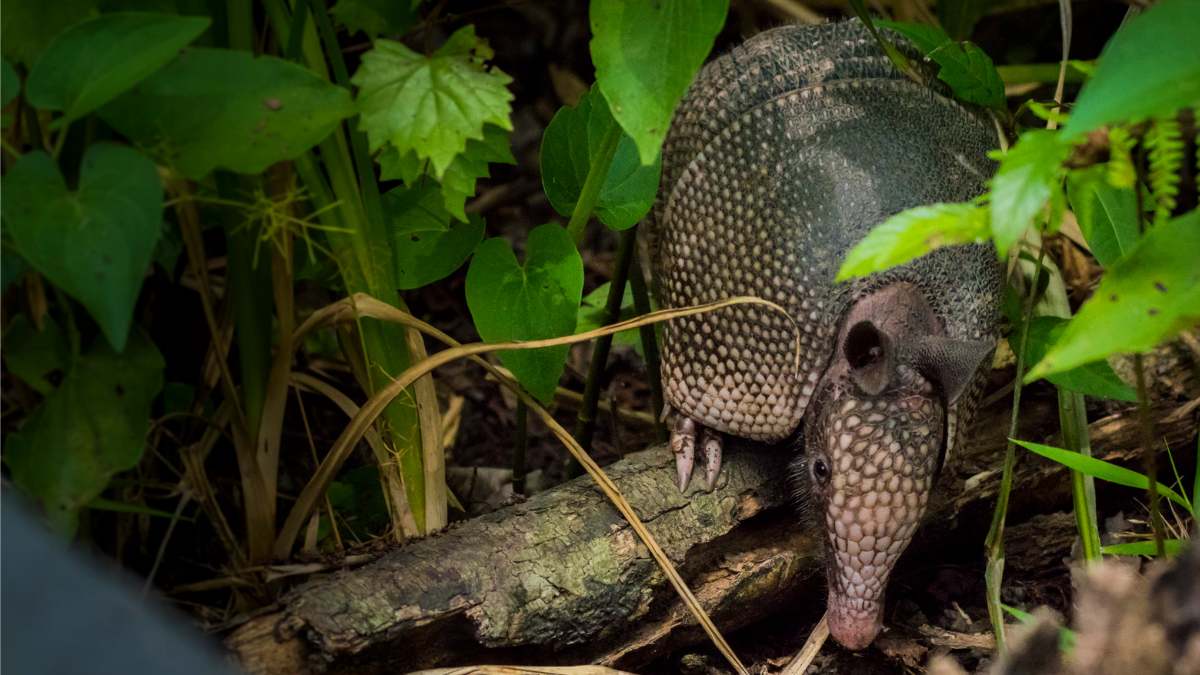Did you know that armadillos can hold their breath for up to six minutes underwater? That’s one of the reasons why they can easily cross rivers and lakes in search of food.
But if you have a garden, you might not be so impressed by these amazing creatures. Armadillos can cause a lot of damage to your plants, flowers, and lawn by digging holes and uprooting vegetation, as you will see in the video below. They can also carry diseases and parasites that can affect your health and your pets.
If you are tired of seeing armadillos ruin your garden, you might be wondering how to get rid of them without harming them or the environment. Luckily, there are some natural and humane methods that can help you deter armadillos from your property. One of them is using vinegar, a common household item that has many uses and benefits.
Here we will show you how to use vinegar to get rid of armadillos in your garden. We will also explain why vinegar works as a repellent, how to apply it correctly, and what other alternatives you can try. By the end of this article, you will have a better understanding of armadillos and how to deal with them respectfully and effectively.
What is an armadillo?
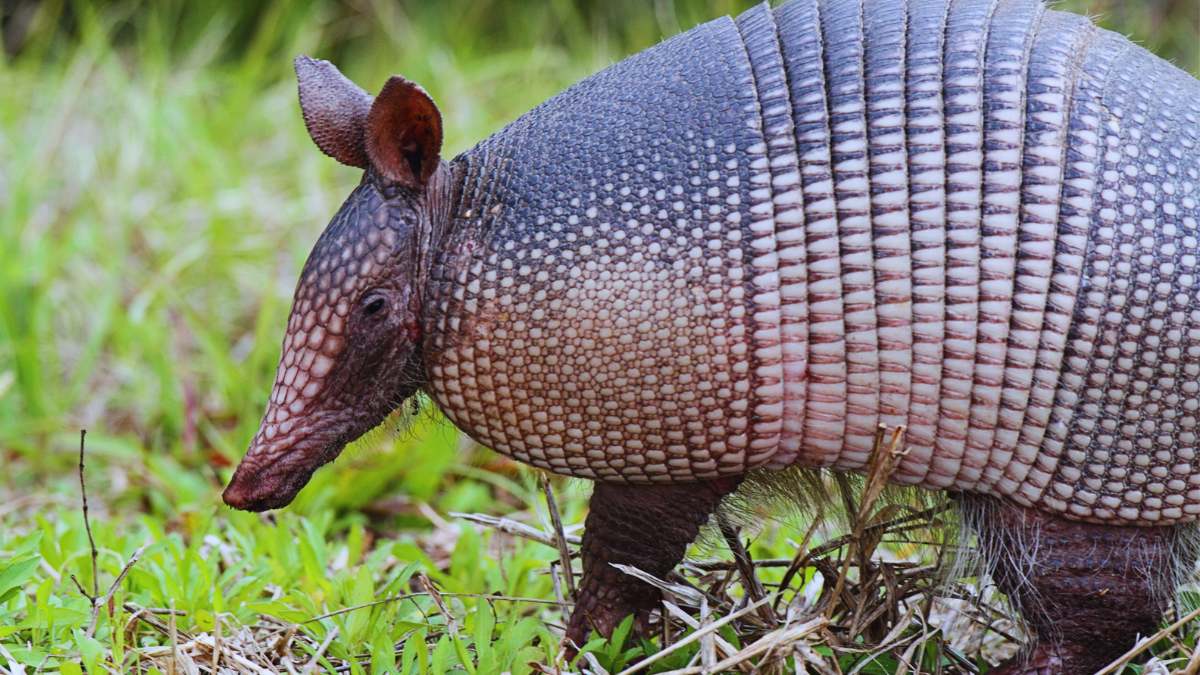
An armadillo is a mammal that belongs to the order Cingulata, which means “belted”. There are 21 species of armadillos, ranging from the tiny pink fairy armadillo to the giant armadillo. They are native to the Americas, from the southern United States to Argentina.
They have a distinctive appearance, with a hard shell made of bony plates that cover their body, head, and tail. They have four legs, each with five toes and sharp claws. They have small eyes, ears, mouths, and long snouts.
They are mostly nocturnal and solitary animals, except for the nine-banded armadillo, which can form groups. They are also known for their ability to roll into a ball when threatened by predators.
Where do armadillos live?
Armadillos live in the Americas, from the southern United States to Argentina. They can be found in different habitats, such as forests, grasslands, wetlands, or deserts. They prefer warm and humid climates, but they can adapt to cold and dry conditions.
They live in burrows that they dig themselves or use from other animals. They can have one or more burrows in their home range, which can vary from 1 to 40 acres. They use their burrows for sleeping, resting, hiding, or raising their young. They can share their burrows with other animals, such as rabbits, skunks, or snakes.
Are armadillos dangerous?
Armadillos are not dangerous animals in the sense that they will not attack or bite you or your pets. They are usually shy and timid and will try to escape or hide when they feel threatened. However, armadillos can be dangerous in other ways, such as causing damage to your garden, spreading diseases or parasites, or attracting other predators.
Therefore, you should not approach or touch armadillos or let your pets do so. You should also keep your distance from their burrows or waste, wear gloves and wash your hands if you have to handle them. If you suspect that you or your pets have been exposed to armadillo diseases or parasites, you should seek medical or veterinary attention as soon as possible.
Do armadillos carry leprosy?
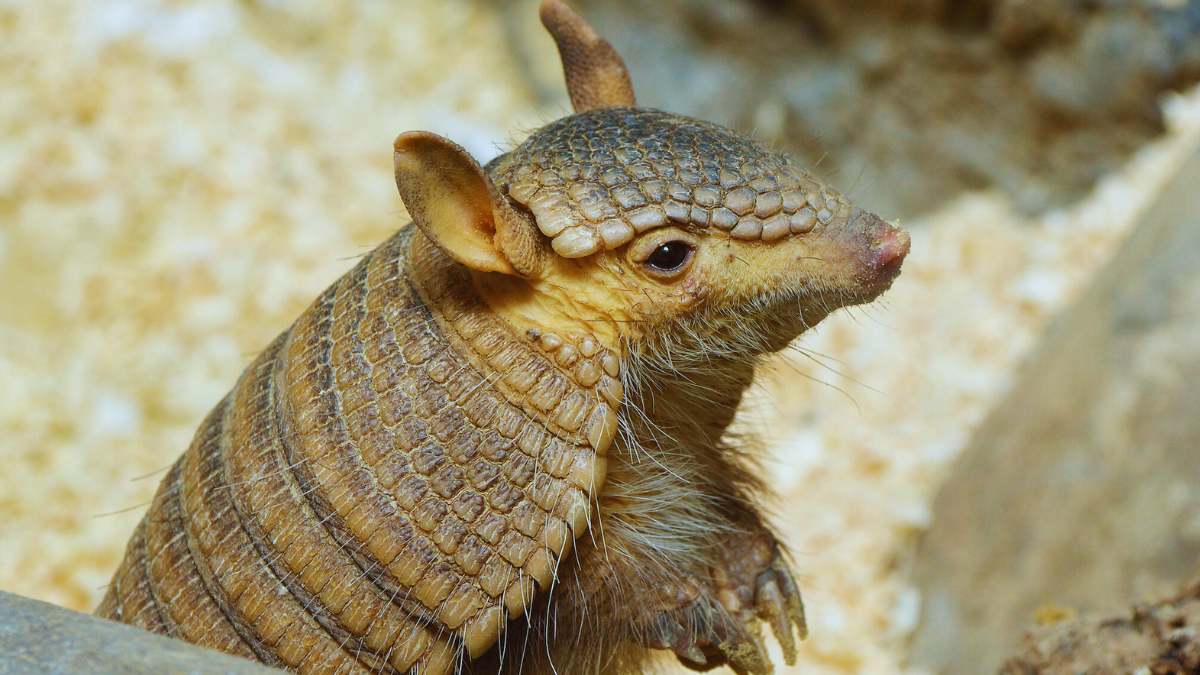
Leprosy, also known as Hansen’s disease, is a chronic bacterial infection that affects the skin, nerves, and mucous membranes. It can cause skin lesions, nerve damage, and deformities. It can be treated with antibiotics, but if left untreated, it can lead to disability or death.
Armadillos are the only animals besides humans that can contract and transmit leprosy. This is because they have a low body temperature and a weak immune system that makes them susceptible to the bacteria that cause leprosy.
The bacteria can be spread through direct contact with armadillos or their blood, saliva, or urine. However, the risk of getting leprosy from armadillos is very low, as most people have a natural immunity to the bacteria. Only about 5% of people are genetically vulnerable to leprosy, and only a small fraction of armadillos are infected with the bacteria.
Therefore, you should not worry too much about getting leprosy from armadillos, but you should still be careful and avoid contact with them or their fluids. You should also monitor your health and seek medical attention if you notice any signs or symptoms of leprosy, such as skin lesions, numbness, or weakness. Leprosy can be cured if detected and treated early.
What disease do armadillos carry?
Armadillos can carry several diseases that can affect humans or pets, such as leprosy, rabies, salmonella, tapeworms, or fleas. These diseases can be transmitted through direct or indirect contact with armadillos or their fluids, waste, or parasites.
Some of these diseases can cause serious health problems, such as skin infections, nerve damage, fever, diarrhea, or allergic reactions. Some of them can also be fatal if left untreated.
Therefore, you should be aware of the potential risks of armadillo diseases and take precautions to prevent them. You should avoid contact with armadillos or their burrows or waste. You should wear gloves and wash your hands if you have to handle them.
You should keep your pets away from armadillos or their burrows or waste. You should vaccinate your pets against rabies and treat them for fleas and worms regularly. You should also check your health and your pets’ health and seek medical or veterinary attention if you notice any signs or symptoms of armadillo diseases.
How to use vinegar to get rid of armadillos
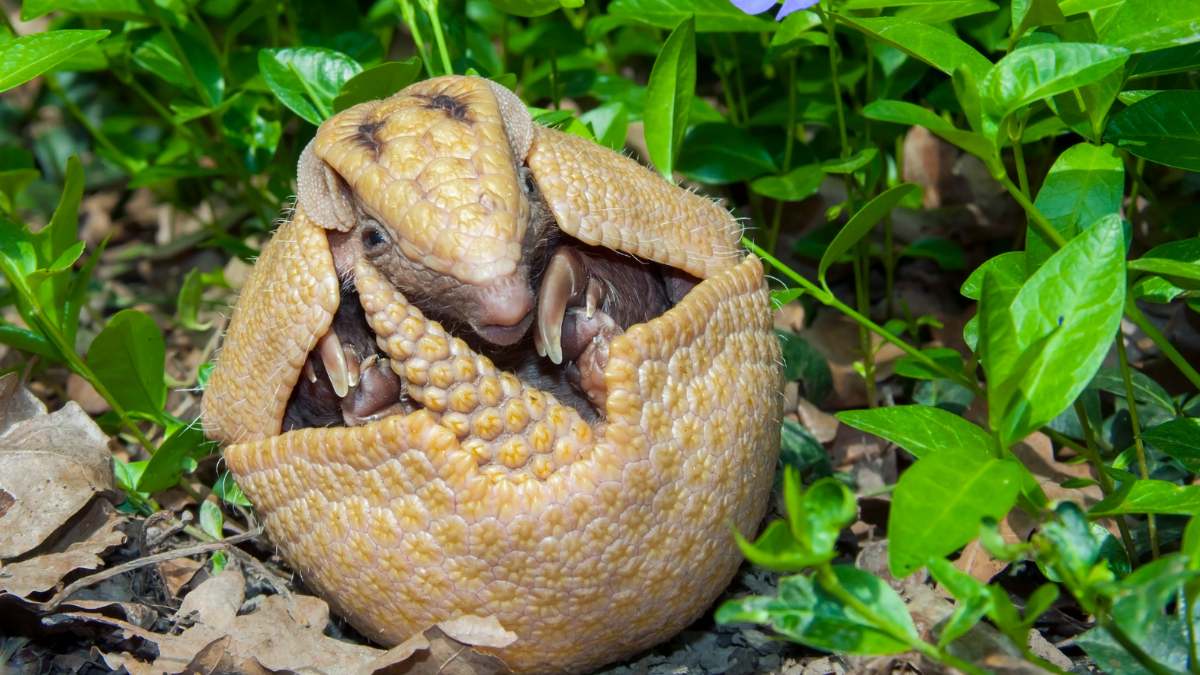
Armadillos don’t enjoy the pungent scent or sour taste of vinegar. Thus, it can be used to keep them away. Armadillos utilize their excellent sense of smell to locate their preferred prey, which includes a wide variety of insects, worms, and grubs. They will avoid vinegar at all costs because of the discomfort it causes to their sensitive mucous membranes.
There are different ways to use vinegar in your garden to keep armadillos away. Here are some of them:
- Spraying: You can spray vinegar directly on the areas where you see armadillo activity, such as holes, burrows, or trails. You can also spray vinegar on the plants that armadillos like to eat, such as bulbs, tubers, or roots. You will need to repeat this process every few days or after it rains to maintain the effect.
- Placing bowls: You can place bowls or cups of vinegar around your garden, especially near the entrances or exits of armadillo tunnels. The vinegar will evaporate and create a strong odor that will deter armadillos from coming near. You will need to refill the bowls every few days or when they dry out.
- Using perforated bottles: You can fill plastic bottles with vinegar and poke holes in them. Then you can hang them from trees, fences, or stakes around your garden. The vinegar will drip slowly and create a lasting smell that will repel armadillos. You will need to replace the bottles every few weeks or when they empty.
Vinegar is an effective natural armadillo repellant with various uses. It doesn’t harm the ecosystem, can be used around kids and pets, and doesn’t cost much. It’s also widely available in supermarkets. There are, however, a few precautions you should take before applying vinegar to your garden:
- Avoid spraying vinegar on plants that are sensitive to acidity, such as azaleas, rhododendrons, or hydrangeas. Vinegar can damage their leaves and flowers and affect their growth.
- Avoid spraying vinegar on metal surfaces, such as fences, gates, or tools. Vinegar can cause corrosion and rusting over time.
- Avoid spraying vinegar on your skin or eyes. Vinegar can cause irritation and burning sensations. If you accidentally get vinegar on your skin or eyes, rinse them with water immediately.
Using vinegar correctly can help you get rid of armadillos in your garden without harming them or the environment. However, vinegar is not the only natural repellent that can work against armadillos. In the next section, we will discuss other options that you can try.
Other natural repellents for armadillos
Vinegar is not the only natural repellent that can work against armadillos. There are other substances that have similar effects and can be used in your garden. Here are some of them:
- Pine needles: Pine needles have a sharp and resinous smell that armadillos dislike. You can spread pine needles on the ground around your plants or along the borders of your garden. Pine needles will also act as a mulch and help retain moisture and prevent weeds.
- Pine bark: Pine bark is another by-product of pine trees that can repel armadillos. You can use pine bark as a decorative element in your garden or as a cover for armadillo holes. Pine bark will also add nutrients to your soil and improve its texture.
- Ammonia: Ammonia is a chemical compound that has a pungent and unpleasant smell that armadillos hate. You can soak rags or cotton balls in ammonia and place them in armadillo burrows or near their trails. You can also spray ammonia on the areas where you see armadillo activity. Be careful not to spray ammonia on your plants or pets, as it can be harmful to them.
- Pine cleaner: Pine cleaner is a product that contains pine oil, which is extracted from pine needles. Pine cleaner has a strong and fresh smell that armadillos find repulsive. You can spray pine cleaner on the areas where you want to keep armadillos away, such as your lawn, flower beds, or vegetable garden. You can also mix pine cleaner with water and use it as a wash for your patio, deck, or porch.
Each of these natural repellents has its own advantages and disadvantages when it comes to repelling armadillos. Here are some of them:
- Pine needles and pine bark are easy to find and cheap to use. They also have other benefits for your garden, such as improving your soil quality and appearance. However, they may not be very effective in areas where armadillos are used to pine trees or where there are many pine trees around.
- Ammonia and pine cleaner are more potent and long-lasting than vinegar. They can create a stronger and more persistent smell that will deter armadillos from coming near. However, they are also more expensive and hazardous than vinegar. They can damage your plants, pets, or skin if used incorrectly or excessively.
You can try different natural repellents to see which one works best for you and your garden. You can also combine them or alternate them to create a more varied and effective defense against armadillos. However, keep in mind that these repellents are not foolproof and may not work for every armadillo or situation.
Sometimes, the best way to get rid of armadillos is to prevent them from entering your garden in the first place. In the next section, we will give you some tips on how to do that.
How to prevent armadillos from entering your garden
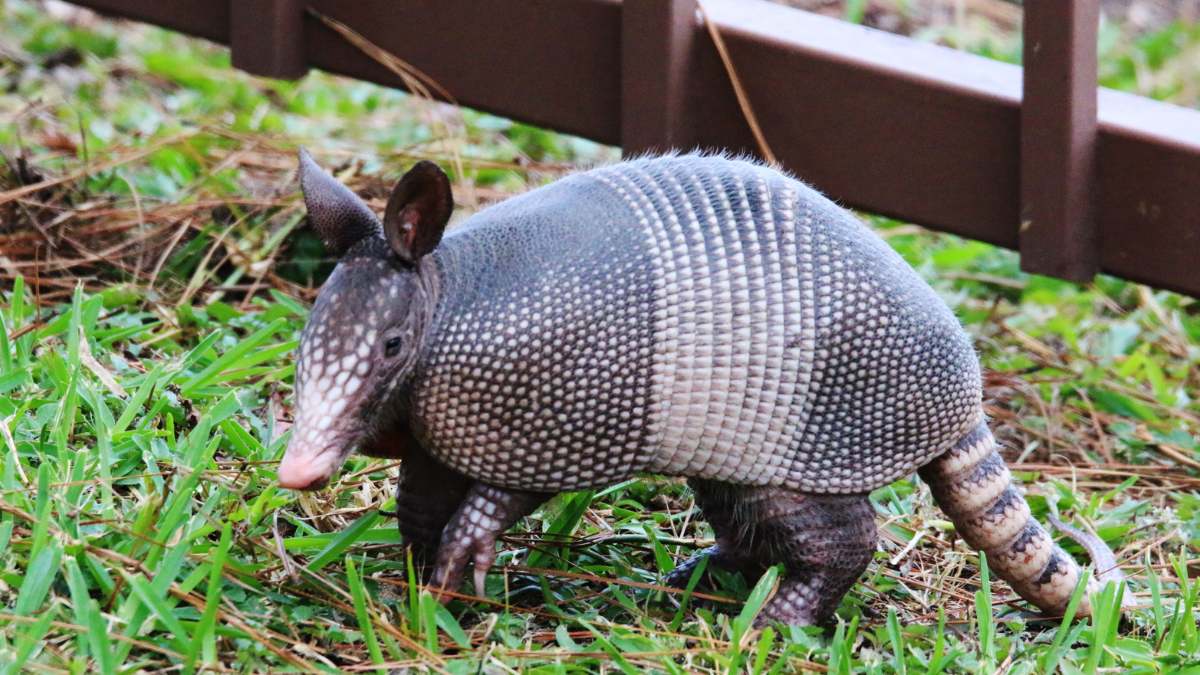
Using natural repellents can help you get rid of armadillos in your garden, but they may not be enough to stop them from coming back. If you want to prevent armadillos from entering your garden in the first place, you need to take some additional measures. Here are some of them:
- Remove or reduce their food sources: Armadillos are attracted to your garden because they find food there, such as worms, insects, or grubs. You can make your garden less appealing to them by removing or reducing their food sources. You can do this by applying organic pesticides, nematodes, or beneficial insects to your soil. You can also aerate your lawn, remove rotten wood, or compost your organic waste.
- Create physical barriers or deterrents: Armadillos are good diggers and climbers, but they can be stopped by some physical barriers or deterrents. You can create physical barriers or deterrents by installing fences, mesh, or wire around your garden. You can also use rocks, bricks, or gravel to cover armadillo holes or tunnels. You can also use motion-activated sprinklers, lights, or noise makers to scare armadillos away.
- Be humane and respectful: Armadillos are not evil or malicious creatures. They are just looking for food and shelter in your garden. They are also important for the ecosystem, as they help control pests and aerate the soil. Therefore, you should be humane and respectful when dealing with them. You should avoid using traps, poison, or firearms to kill or injure them. You should also avoid harming their babies or nests. If you need to relocate an armadillo, you should contact a professional wildlife removal service.
Preventing armadillos from entering your garden can save you a lot of time and trouble in the long run. It can also help you protect your plants, pets, and health from armadillo damage and diseases.
However, it may not be possible or practical to prevent armadillos completely from your property. In that case, you can use natural repellents as a complementary solution.
Conclusion
Armadillos are fascinating animals, but they can also be a nuisance for gardeners. They can dig holes, uproot plants, and spread diseases in your garden. If you want to get rid of them without harming them or the environment, you can use vinegar and other natural methods to repel them.
In this article, we have shown you how to use vinegar and other natural repellents to get rid of armadillos in your garden. We have also explained why vinegar works as a repellent, how to apply it correctly, and what other alternatives you can try. We have also given you some tips on how to prevent armadillos from entering your garden in the first place.
We hope that this article has helped you solve your armadillo problem and improve your gardening experience. We encourage you to try some of the methods we have suggested and share your results or feedback with us. We would love to know how they worked for you and if you have any suggestions or improvements.
If you liked this article, please share it with your friends and family who might also have armadillo issues.
Thank you for reading, and happy gardening!
FAQ
What do armadillos eat?
Armadillos are omnivorous animals, which means they eat both plants and animals. However, their main food source is worms, insects, and grubs that they find in the soil. They also eat some fruits, nuts, seeds, fungi, or carrion. They use their long snout and claws to dig and sniff for their food. They can eat up to 40% of their body weight in one day.
How often do I need to apply vinegar to repel armadillos?
You need to apply vinegar every few days or after it rains to maintain its effect. Vinegar will evaporate or wash away over time, so you need to reapply it regularly to keep the smell strong and unpleasant for armadillos.
What are the signs of armadillo activity in my garden?
Some of the signs of armadillo activity in your garden are holes, burrows, or trails on the ground, damaged or uprooted plants or flowers, or droppings or tracks on your lawn. If you see any of these signs, you may have an armadillo problem and need to take action.
What are the risks of armadillo diseases and parasites for me and my pets?
Armadillos can carry diseases and parasites that can affect your health and your pets. Some of the diseases and parasites that armadillos can transmit are leprosy, rabies, salmonella, tapeworms, and fleas. You can avoid these risks by wearing gloves and washing your hands when handling armadillos or their waste, keeping your pets away from armadillos or their burrows, and consulting your doctor or veterinarian if you or your pets show any symptoms of infection.
Are armadillos endangered?
Armadillos are not endangered as a whole, but some of their species are. There are 21 species of armadillos, and four of them are listed as vulnerable, endangered, or critically endangered by the International Union for Conservation of Nature (IUCN).
These are the giant armadillo, the pink fairy armadillo, the greater long-nosed armadillo, and the Andean hairy armadillo. These species are threatened by habitat loss, hunting, poaching, or climate change.
They have low population numbers and low reproductive rates, which make them vulnerable to extinction.
Therefore, you should respect and protect armadillos and their habitats, especially the ones that are endangered. You should not hunt or kill armadillos for their meat, shell, or fur. You should not capture or keep armadillos as pets.
You should not destroy or disturb their natural habitats, such as forests, grasslands, or wetlands. You should also support conservation efforts and organizations that work to save armadillos and other wildlife. Armadillos are important for the ecosystem and the biodiversity of the Americas, and they deserve our care and respect.
Do armadillos lay eggs?
No, armadillos do not lay eggs. Armadillos are mammals, which means they give birth to live young. However, armadillos have a unique reproductive system that makes them different from other mammals. Armadillos can delay their implantation, which means they can postpone the development of their fertilized eggs until the environmental conditions are favorable.
This can last from two to 14 months, depending on the species. Armadillos also have polyembryony, which means they can produce identical offspring from a single egg. This is why most armadillos have four babies at a time, all of the same sex and genetic makeup.
Armadillos usually mate once a year, and their gestation period can range from two to five months, depending on the species. Their babies are born with soft shells that harden within a few weeks. They stay with their mother for six to 12 months until they are independent and ready to leave.
